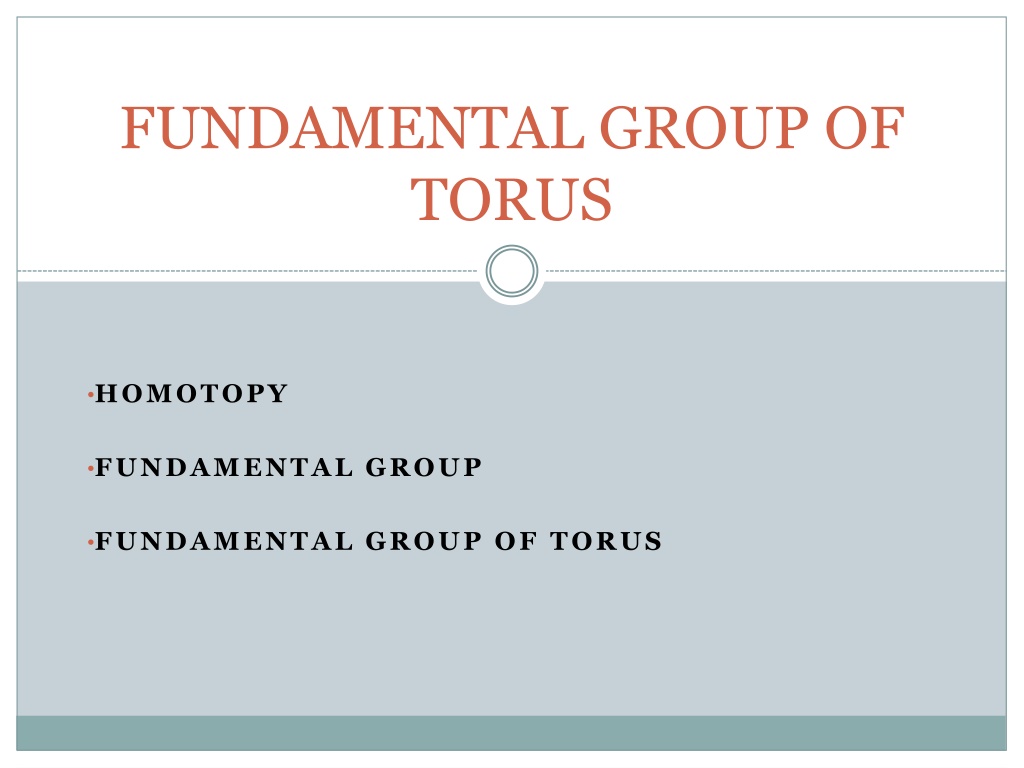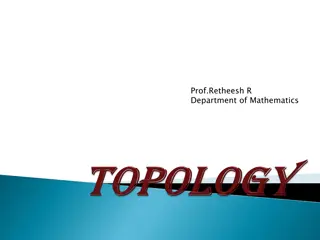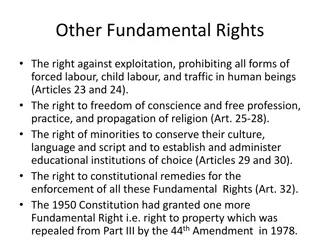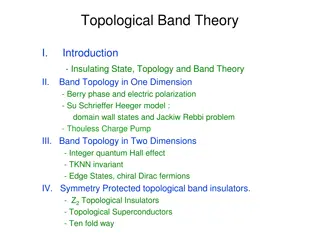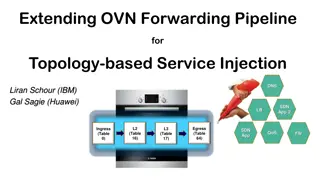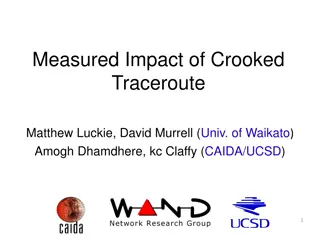Understanding Homotopy and Fundamental Groups in Topology
Explore the concepts of homotopy and fundamental groups in topology, where objects with the same structure can be classified into classes, and the fundamental group characterizes loops. Discover the fundamental group of a torus, its identity elements, closure, associativity, and inverses. Homotopy allows for continuous transformations between functions in a topological space, showcasing equivalence relations that remain unchanged with dilation or retraction.
Download Presentation

Please find below an Image/Link to download the presentation.
The content on the website is provided AS IS for your information and personal use only. It may not be sold, licensed, or shared on other websites without obtaining consent from the author. Download presentation by click this link. If you encounter any issues during the download, it is possible that the publisher has removed the file from their server.
E N D
Presentation Transcript
FUNDAMENTAL GROUP OF TORUS HOMOTOPY FUNDAMENTAL GROUP FUNDAMENTAL GROUP OF TORUS
HOMOTOPY The torus and the mug are homotopic to each other
HOMOTOPY Two functions in a topological space can be said to be homotopic when one can be continuously transformed into the other. It is an equivalence relation. Internal closed paths never change
HOMOTOPY If objects have same structure, they can be classified as a class, regardless of their size, shape and dimension. Fundamental group never changes with dilation or retraction Fundamental group characterizes only loops
FUNDAMENTAL GROUP The fundamental group of an arc-wise connected set X is a group formed by sets of equivalent classes of set of all loops Never needs a specific base point Representation: _1(S)
FUNDAMENTAL GROUP OF TORUS Product of fundamental group of circle with itself Representation : _1(T^2)= (S1) x (S1) Reason for not considering specific base point: Existence of homotopy between loops of torus
FUNDAMENTAL GROUP OF TORUS IDENTITY ELEMENT: Constant path CLOSURE: f:X Y, g:Y Z, then f*g:X Z ASSOCIATIVITY: f*(g*h) = (f*g)*h f: X Y g: Y Z h: Z W INVERSE: f:X Y, g:Y X, f*g is constant path
